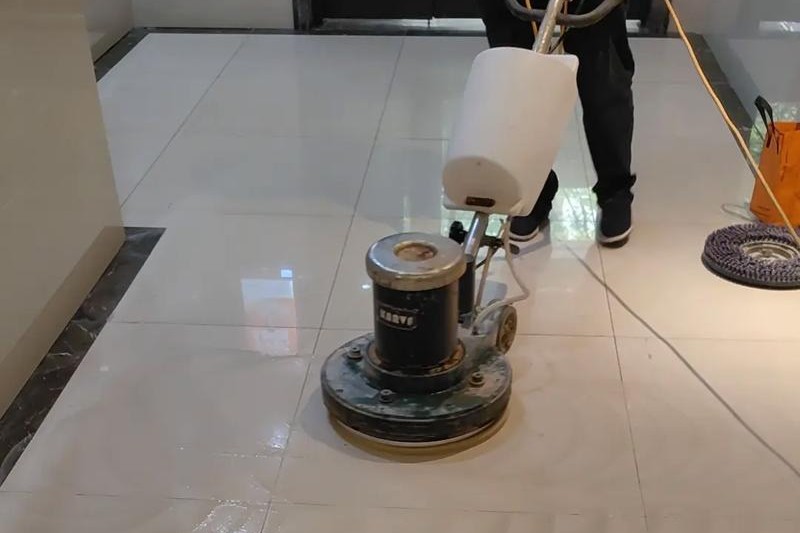How to Deal with Uneven Tiles?
Uneven tiles are a serious problem in both residential and commercial spaces, affecting not only the aesthetics of a room but also its functionality and comfort. Fortunately, there are effective ways to address uneven tiles, with sanding being one of the most common solutions. This article will explore what sanding is, why it’s necessary, and how to sand.

What Is Sanding?
Sanding is the process of removing raised areas from a tile surface by grinding them away, creating a smooth, even finish. This technique involves using an abrasive material, such as sandpaper or a diamond pad, to smooth out the raised areas. The goal is to create a smooth surface, improving the overall appearance and usability of the tiled area.
Why Is Polishing Necessary?
The flatness of your tiles directly impacts their lifespan, aesthetics, and comfort. Here are some reasons why polishing is crucial:
Aesthetics: Uneven tiles can be visually distracting and appear unprofessional. A smooth, even surface can enhance the overall look of a space, making it more inviting and visually appealing.
Practical: Uneven tiles can create tripping hazards or uneven foot pressure, leading to walking discomfort. This is especially important in high-traffic areas or spaces where people may walk barefoot.
Longevity: Over time, uneven tiles can wear away, crack, or become damaged. Sanding helps maintain the integrity of the tile, extending its life and reducing the need for costly repairs or replacements.
When to Polish
Sanding may be necessary in the following situations:
1. Serious unevenness after paving
If the tiles are noticeably uneven after installation, they must be sanded to correct the problem. This could be due to improper installation, variations in the substrate, or the tile itself. Check the surface for flatness after installation and if any bumps are found, sand them to achieve a flat surface.
2. Surface wear over time
Even well-installed tiles can become uneven over time due to wear and tear. Factors such as foot traffic, heavy furniture, and environmental conditions can cause the tile surface to deteriorate. If you notice that your tile is becoming uneven or has ridges, it may need to be re-sanded to restore its original smoothness.
Polishing Method for Uneven Tiles
1. Home grinder
Home sanders are versatile and suitable for polishing a variety of stone materials, including tile skirtings, door sills, countertops, and tiles. Because they are convenient and easy to use, they are particularly suitable for personal use at home. Here are some tips for using a home sander effectively:
Adjust speed: When using a home grinder, always adjust the speed to avoid scratching your tiles. Slower speeds are generally recommended for delicate surfaces, while faster speeds are recommended for harder materials.
Clean surface: Before you begin, make sure the tile surface is clean and free of any debris or residue. This step is crucial to prevent scratches during the polishing process.
Tip: Use gentle, sweeping motions when sanding, avoiding excessive pressure. This will help to gradually remove raised areas without damaging the tile.
2. Professional grinder
For larger or more extensive renovations, a professional sander is the preferred choice. These machines are designed to handle large surfaces and achieve a higher degree of flatness. Here are some key points to consider when using a professional sander:
Surface condition: Choose the appropriate grinding head based on the surface condition of the tile. Different grinding head designs are suitable for different materials and degrees of wear.
Specialized skills: Professional grinders require specialized skills and in conclusion
Addressing uneven tile is crucial to maintaining the beauty and functionality of your space. Polishing methods, such as using a home or professional sander, can effectively address this issue. By choosing the right method for your needs and taking the necessary precautions, you can significantly reduce repair time and costs while achieving a beautiful, even tile surface. Whether you choose to handle the problem yourself or hire a professional, the right approach will ensure your tile looks its best and provides a safe and comfortable environment.
In Conclusion
Addressing uneven tile is essential to maintaining the beauty, comfort, and durability of your tile surface. Sanding is an effective method for achieving a smooth, even surface, whether addressing severe unevenness after installation or repairing surface wear caused by long-term wear and tear. By regularly inspecting tile surfaces and performing necessary maintenance, homeowners and professionals can ensure their tiles remain beautiful and functional for years to come. If you’re unsure about the sanding process or lack the necessary tools, consider consulting a professional for the best results.
-
Online service
-
Official wechat account

-
QQ:40933769
-
E-mail:sales@z-lion.com
Online Message
Please feel free to give your inquiry in the form below. We will reply you in 24 hours.

